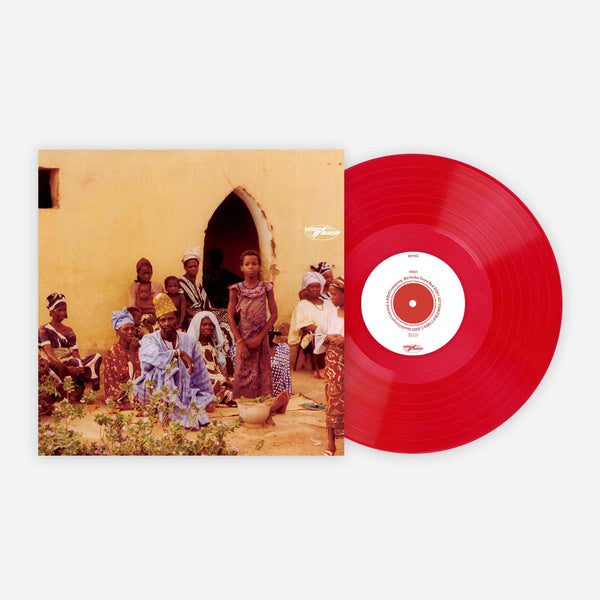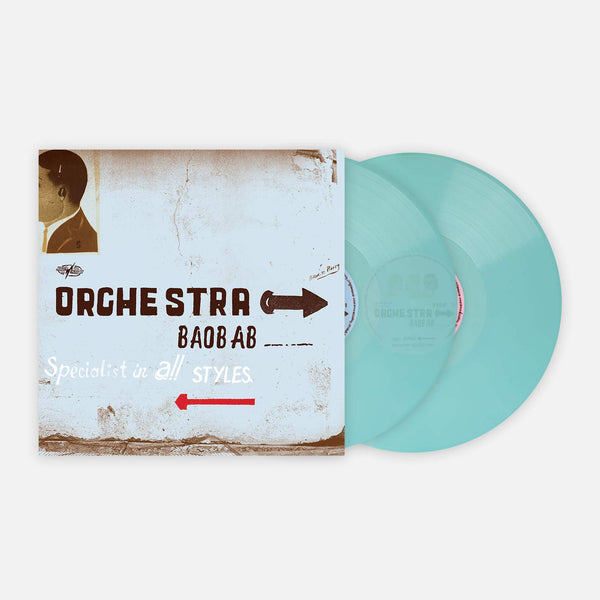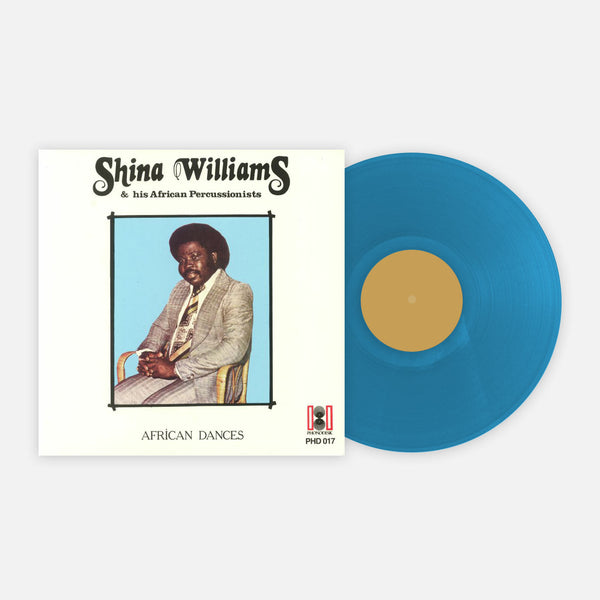Sub Pop 30: Bağımsız Rock'ın En İyi Etiketlerinden Birinin Üç Albümlük Tarihi
Bu yıl, saygın bağımsız rock kurumu Sub Pop 30. yaşına basıyor. Bu kadar uzun süre ayakta kalmak, herhangi bir plak şirketi için şaşırtıcı bir başarı, ancak müziğin önemli olduğunu düşündükleri ve yayınlamaya değer buldukları konularda büyük riskler alan bir plak şirketi için özellikle öyle.
Plak şirketinin 30. yılını kutlamak için, Vinyl Me, Please ve Sub Pop, şirketin 30 yıllık serüveni boyunca yayınlanan albümlerden oluşan üçlü bir paket üzerinde iş birliği yaptı. Şu anda Vinyl Me, Please mağazasında Sebadoh’un Bakesale (Buradan satın al), Sleater-Kinney’nin The Woods (Buradan satın al) ve Foals’un Total Life Forever (Buradan satın al) özel baskılarını satın alabilirsiniz.
Aşağıda, VMP x Sub Pop çıkışı hakkında, kurucu ortak Jonathan Poneman ile birlikte üç albümü konuşuyoruz.
VMP: Siz Sub Pop'u 30 yıl önce kurduğunuzda, bunun gerçekten böyle bir noktaya geleceğini düşündünüz mü? Etiketinizi kurduğunuzda 30 yıl süreceğini düşünüyor muydunuz?
Jonathan Poneman: Biliyorsunuz, biz o yaşlardaydık - 20'lerimizin sonlarındaydık - genel olarak bu kadar uzun düşünmezsiniz. Anlık yaşarsınız, özellikle de her gün kaybetmek üzereyken. Yani, açıkçası, buna hiç düşünmedim. Umudum vardı, çünkü harika sanatçılarla çalıştığımızın farkındaydık. Müzik yeterince iyi bir şekilde kaydedilirse - hatta bunun ötesinde, sihirli bir şekilde yakalanırsa - müziğin kalıcı olacağını umuyorduk. Ama müziğin yanında bizlerin dayanıp dayanmayacağına dair hiçbir düşünce yoktu.
Sub Pop'un ilk LP'si, grunge tarzı müziğin öncülerinden biri olan Green River'ın kendini adadığı tek ve sadece albümüydü. Bu grup, Mudhoney ve Pearl Jam'ı oluşturan üyeleriyle dikkat çekti. Sub Pop'un ilk zamanları, etiketin Seattle'daki en iyi grupları yayınlama hedefiyle Pasifik Kuzeybatı rock'ına dalmış bir kurs gibiydi. Nirvana’nın Bleach albümü ve grubun Nevermind için Geffen ile imzaladığı sözleşme, Sub Pop'u yeni yetenekler için önde gelen bir bağımsız rock markası haline getirdi. 90'ların ortalarına geldiğinde, etiket sadece Seattle gruplarının değil; ülke genelinden bağımsız grupların albümlerini de yayınlamaya başlamıştı.
Bakesale ve Sebadoh nasıl Sub Pop'a geldi? Lou ile nasıl çalıştığınızı hatırlıyor musunuz?
Onlar ilk üç kaydı yapmışlardı ve özellikle Sebadoh III aklımda kalmıştı. Ortak arkadaşlarımız vardı, Megan Jasper ki o şimdi Sub Pop'un CEO'su ve o zamanlar Sub Pop'un dağıtım şirketinde dağıtımcıydı [Alternative Distribution Alliance]. Çok fazla demolarını verdiğini sanmıyorum ama bu, Sebadoh’un yayınladığımız ilk albümüydü. Ardından Bakesale çok hızlı bir şekilde kaydedildi. Eric [Gaffney] gruptan ayrıldı ve Eric’in katkılarını seviyorum ama Bakesale'daki Jason [Loewenstein] ile Lou [Barlow]’un şarkıları arasındaki gerilim, o grupta sevdiğim her şeyin özüdür. Ya da daha sonra, Harmacy'de daha fazla gelişecek olan Sebadoh hakkında sevdiğim şeylerin özüdür.
O albüm için o günlerde nasıl bir süreç işliyordu? Onların Bakesale'i Sub Pop'ta çıkaracaklarını biliyor muydunuz, ve demolarını duyduğunuzda süreç neydi?
Süreç kayda göre değişiyordu. Yani, biz iki başka etiket ortağımız vardı, bu 25 yıl önceye geri dönüyor, bu nedenle bu şeyleri hatırlamam gerekiyor. Ama, öncelikle, City Slang ve Laurence [Bell] Domino'da, o zamanlar çok daha küçük etiketlerdi, kıtanın Avrupa ve Britanya için almışlardı ve Lou, işte bizim fiili irtibat kişimiz haline geldi. Bir kaset aldığımı hatırlıyorum, “Bu bizim yeni kaydımız” dediklerinde dinledim ve etkilendim. Ama ilişkimiz, profesyonel ilişki açısından, iyi ama zorlu bir süreçti. Orada herhangi bir önyargı yoktu - bunu nasıl ifade edeyim? - yalan yoktu. Her şey çok doğrudandı ve bunu takdir ettim.
O dönemde, Sebadoh, yaptığınız diğer şeylerden farklı bir ses gibiydi. O zaman Sub Pop sesi hakkında ne kadar düşündünüz?
Gerçekten bunun üzerinde düşünmedik. Başlangıçta, Bruce [Pavitt] ve ben bunun üzerinde düşündük çünkü “Sub Pop sesi” aslında onun Seattle'daki bölgesel sesiydi ve bunu pazarlıyorduk. Ama o zamana geldiğimizde, harika şarkıcılara ve harika şarkı yazarlarına ilgi duymakla yetindik ve Lou kesinlikle bunların ikisiyle donanmıştı, Jason da öyle.
Grunge ve 90'lar bağımsız rock patladıktan sonra — ve Napster ortaya çıktığında — birçok bağımsız gibi, Sub Pop'un da en zorlu dönemleri oldu. Ama kendilerini tekrar tanımladılar, Shins gibi grupların yayınlarıyla, ve 2000'lerin ortalarında, yeni bir nesil bağımsız rock grubu için bir hedef haline geldiler. Ama etiketin en büyük 2000’ler hitlerinden biri, Sub Pop'a nihayet gelen 90'lar kökenli bir grup olan Olympia, Washington'dan bir albüm oldu.
Şu anda yaptığımız bir sonraki kayıt Sleater-Kinney'nin The Woods albümü. Ama arada büyük bir boşluk var. Etiketin tarihinin birçok yerinde, 90'ların sonları ve 2000'lerin başlarında kapıları kapatma ihtimaline yaklaştığınızdan çokça bahsediliyor.
Evet, kapıları kapama noktasına hiç gelmedik. Bu her zaman büyük ölçüde abartılmıştır. Başlangıçta iflasla flörtlerimiz oldu; bunlar flörtlerden çok daha fazlasıydı, uzun süreli ilişkilerdi. (Gülmek.) Ama sonra Napster geldi ve her şey değişti. Bunun olumlu tarafı bağımsız etiketler için daha fazla fırsat sağlanmasıydı, olumsuz tarafı ise kaydedilmiş müziğin gerçek değeri gerileyerek algılarımıza düşüş yaşandı. 90'ların sonları ve 2000'lerin başlarında, Sub Pop gibi bir etiketin iş maliyetleri, Warner Music ile yaptığımız bir anlaşma nedeniyle ve benim sorumluluğunu tamamen üstlendiğim bir yön seçmemizden dolayı en alt seviyeye yaklaşmıştık. Ama asla çakılma noktasına gelmedik.
Ağaçlara hiç çarpmadınız.
Evet, kesinlikle.
(Gülmek) Tamam. Peki, Sleater-Kinney Sub Pop'a nasıl geldi? Bu harika Pasifik Kuzeybatı grubunun 2005'te Sub Pop'a gelmesi şaşırtıcı değil mi?
Ofisimde Sleater-Kinney’yi destekleyen birçok insan olsa da, onlar Slim [Moon] ve Kill Rock Stars ile ilişki kurmuşlardı ve Slim Olympia'daydı, bir arkadaşıydı ve yıllarca çok iyi iş çıkardı ama biz 2005'te daha fazla finansman sağlamış bir etikettik. Onlarla çoklu albümlerle uzatılmış bir ilişki için bir sözleşme görüşmesi yaptık. Önceden kaydı tek tek yapmışlardı ve bizim anlaşmamızdaki ilk kayıt The Woods idi ya da olacak olan The Woods'di. Bu bizim için çok ilginçti çünkü onun üzerinde Dave Fridmann ile çalışacaklardı, ki bunu da gerçekleştirdiler ve diğer kayıtları çok iyi yapılmıştı, 90'ların ve 2000'lerin başlarındaki klasik kayıtlar arasındaydı, ancak Dave Fridmann ve Sleater-Kinney'nin birleşimi özel bir şekilde ilgi çekiciydi. Ve sonuçların kendilerini gösterdiği düşünüyorum. Söylemeliyim ki, bu muhtemelen benim en sevdiğim Sleater-Kinney kaydı, gerçekten çok etkileyici. Ve grup kariyerlerinin oldukça heyecan verici bir noktasındaydı.
O zamanlar bunun 10 yıldan fazla sürecek son albümleri olacağını biliyor muydunuz?
Hayır, hiçbir fikrimiz yoktu.
2015 yılında sizin için yaptıkları albüm, onlara verdiğiniz anlaşmadaki bir sonraki albüm müydü?
Oldu.
Vay.
Evet, biliyorsunuz, büyüklük bazen zaman alabilir.
Büyüklüğün biraz daha az zaman almasını tercih ederdiniz bence.
Aslında hayır, önemli olan rock gruplarının müzik çıkarması için yeterince yok. Sleater-Kinney korsan çok satış yapıyor ve çok saygın insanlarla çalışmak büyük bir zevk ama bu noktada - işimiz o kadar çeşitlenmiş durumda ki bir grubun çıkardığı kayda bağlı değiliz. Bu şekilde çalışan her kayıt şirketi, eski moda bir model üzerinde çalışıyor demektir. Yani, fan perspektifinden, Sleater-Kinney albümlerini daha düzenli olarak almak güzel olur - onlardan yeni müzik duymayı seviyorum - ama iş açısından, ilham aldıklarında çalışmaları için, dördüncü çeyrek rakamları veya başka bir şey hakkında endişelenmektense tercih ederiz.
Çeşitlendirme konusuna gelince, yaptığımız son albüm Foals'un Total Life Forever. Sub Pop döneminin bu döneminde, türsel olarak yaptığınız albümler daha fazla çeşitlenmeye başladı, çünkü 2010 yılında bir Wolf Parade albümü, bir CocoRosie albümü, bir Shabazz Palaces albümü yaptınız. Yıllık bir plan yaparken, “Bu tür ayrımı yapmak istiyoruz” diye düşünüyor musunuz yoksa “Bunlar güzel kayıtlar, bunları çıkarmak istiyoruz” mu?
Yıllar içinde A&R sürecinin açılması gerçekleşti. Başlangıçta, Bruce ve ben her şeyi oldukça dikkatlice gözetliyorduk, sonra birkaç yıl boyunca Doğu Kıyısı operasyonlarımızı yöneten Joyce Linehan isminde bir kişimiz oldu; o, aldığımız A&R kararlarında büyük bir etkiye sahipti. O noktadan itibaren, müzik signette birçok insanın önerilerde bulunabileceği ve sürekli bir müzik sohbeti sürdürebileceği bir noktaya gelmek her zaman benim ilgim oldu. Ben bir müzik hayranıyım ama Sub Pop'ta çıkan şeylerin ben bir rock müzik dinleyicisinden daha maceracı olduğunu düşünüyorum. Her tür müzik dinliyorum ama özel olarak rock müzik söz konusu olduğunda ve biz esasen bir rock müzik etiketiyiz, bu ofiste müzik tüketen ve daha iyi bilgilendirilen insanlar var. Masada yer alabilmek gerçekten hoşuma gidiyor ama bu vizyonu diktatörlük etmekte değil. Benim için heyecan, onları heyecanlandıran şeyleri imzalamak. Dolayısıyla, Sub Pop'ın kayıtlardaki ayrışma ve çeşitlenmesini görüyorsanız, bu, birçok farklı müzik başının bir araya gelmesi ve arkamızda durduğumuz şeyleri seçmesi sonucudur. Gerçekten bunu söylemek isterim, çeşitliliği seviyorum ve daha fazlasını istiyorum. Tarihsel olarak Sub Pop, bölgesel müzikle ilgilenmiştir, özellikle de bölgesel sahnelerle ve bunların onları nasıl yansıttığıyla ilgilenmiştir.
Bu Foals kaydı, genel olarak Sub Pop'a uygun ama başka her şeyden farklı bir yere sahip. Ve bu, Birleşik Krallık'taki dans müziği yapan tüm grupların bulunduğu o dönemleri temsil ediyor.
Transgressive Records'taki arkadaşlarımla arkadaş olmuşum ve onlar bana Foals'u tanıttı. Onları Londra'daki bir üniversite gösterisinde izlemeye gittim, çok erken bir dönemde; Antidotes kaydedilmeden önceydi. Hepsi bir çember veya yarım çemberin içindeydiler ve çok yoğun bir izlenim veriyorlardı ve harika bir davulcuları ve çok karizmatik bir şarkıcıları vardı ve müziklerinde birçok farklı öğe vardı. Transgressive insanlar partnerleri yoktu, o zaman İngiltere'de Warner Music ile çalışıyorlardı ama Kuzey Amerika'da özel partnerleri yoktu. Bana grubun hype'ını yaptı ama onları gördükten sonra tamamen hayran kaldım. İki kayıt için onların desteğini kazanabildik.
Kesinlikle. Son bir soru: Sub Pop'un 30 yıl boyunca neden var olduğunu düşünüyorsunuz? Pek çok bağımsız etiket o dönem varlığını koruyamadı veya kapandı?
Bunun büyük kısmı, hayatımla ilgili ne yapacağımı hayal edemememle alakalı. Yani sadece işe gelmeye devam ediyorum.
(Gülmek)
Bunu burada bırakacağım.
Andrew Winistorfer is Senior Director of Music and Editorial at Vinyl Me, Please, and a writer and editor of their books, 100 Albums You Need in Your Collection and The Best Record Stores in the United States. He’s written Listening Notes for more than 30 VMP releases, co-produced multiple VMP Anthologies, and executive produced the VMP Anthologies The Story of Vanguard, The Story of Willie Nelson, Miles Davis: The Electric Years and The Story of Waylon Jennings. He lives in Saint Paul, Minnesota.




